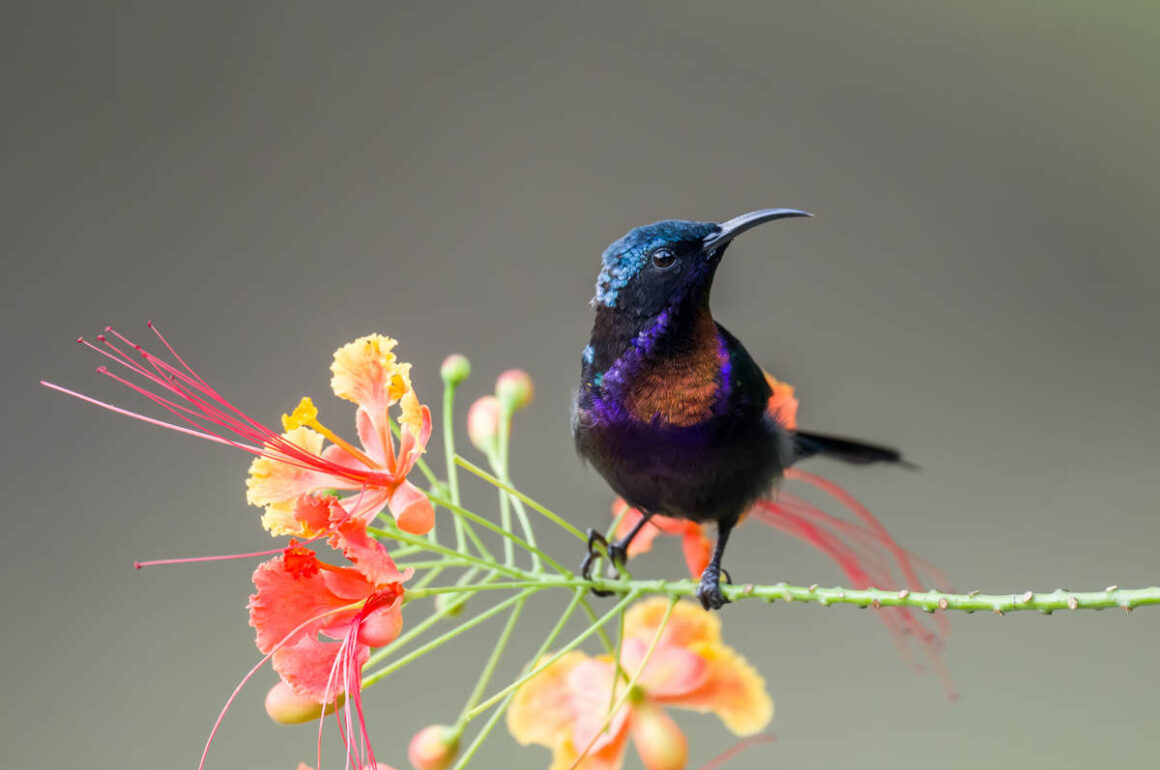
Sunbirds are basically hummingbirds without any danger of Trumpism or MAGA ideology. And they think in meters and kilograms rather than in weird non-matching units such as feet and pounds. Apparently, convergent evolution has spared them from taking up these more unpleasant aspects of hummingbirds. So, not much that is not to like about hummingbirds, particularly as they also frequently perch (unlike hummingbirds), which makes the life of the bird photographer so much easier.
The somewhat shoddily edited Wikipedia entry on sunbirds states that there are 145 species in one paragraph and then talks about 146 in the next. Anyway, I only saw 6 of them at Sepilok, though I very likely missed a few.
There isn’t really a lot of interesting information on the individual sunbird species – but the photos hopefully still make this a post worth looking at.
Perhaps the most spectacular-looking sunbird here is the male Copper-throated Sunbird. In poor light, it simply looks black – this helps the bird to be more or less invisible when moving around the mangroves, its favorite habitat.
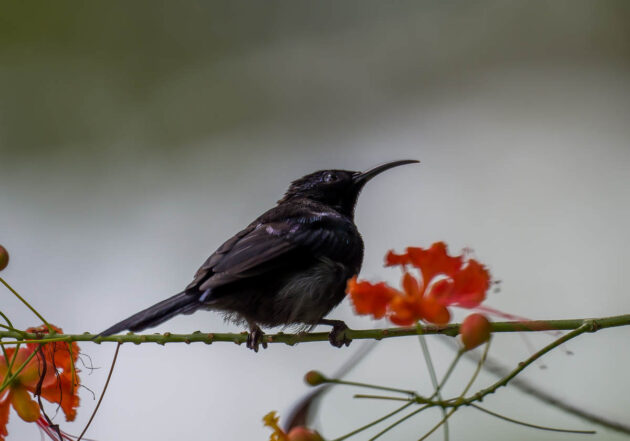
But when a female is present, it may move into the light and show its full colors. Apparently, this will stimulate the female sensory system, thus increasing his mating success (source).
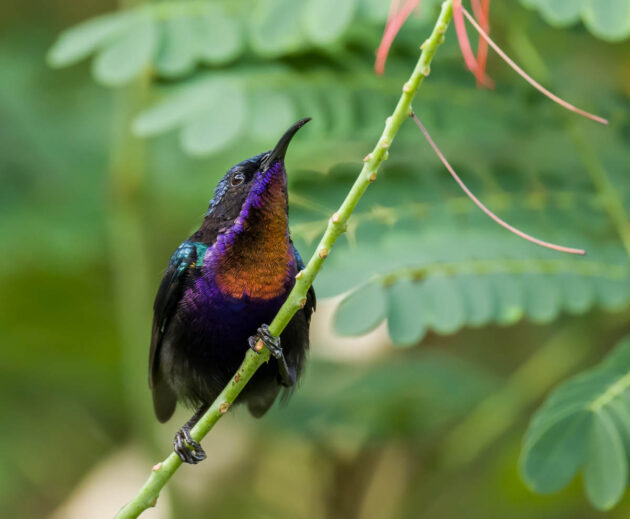
If I was working in marketing, I would probably say that the male offers two different birds in one. Fortunately for my soul, I am not working in marketing though.
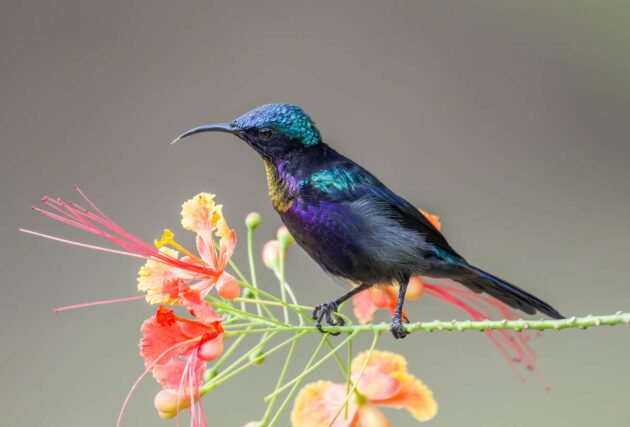
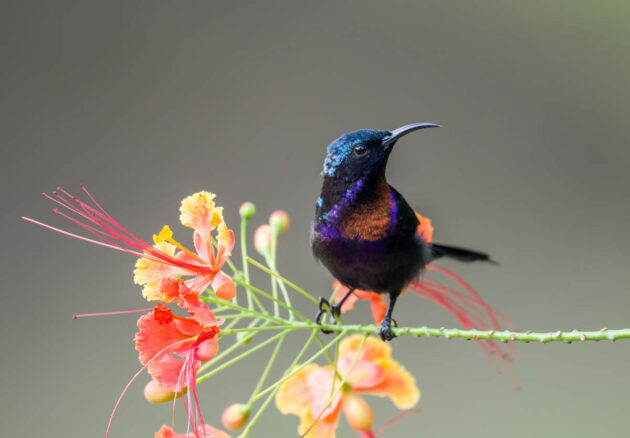
Here is one of the females that the male might want to impress.
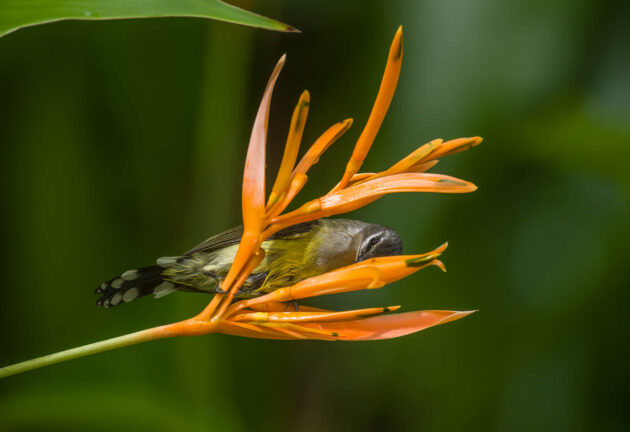
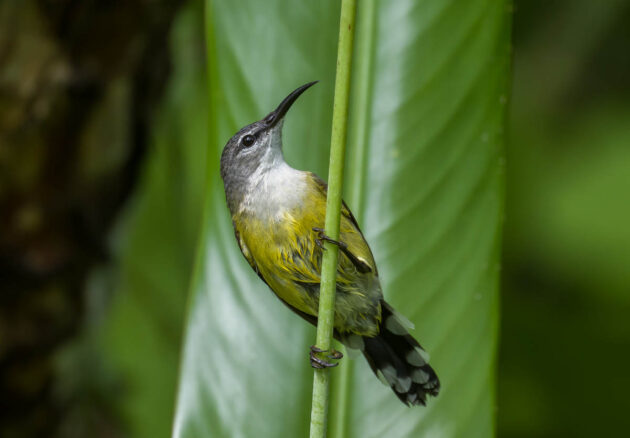
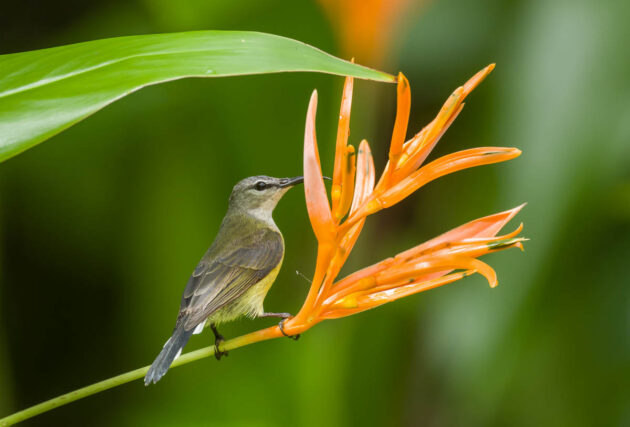
As you can see, the species – like many other sunbird species – is sexually dimorphic, which in the cruel world of sunbirds usually means that the male looks much nicer than the female. So, what the females look at when seeing their mates tends to be much nicer than what the males see. So unfair.
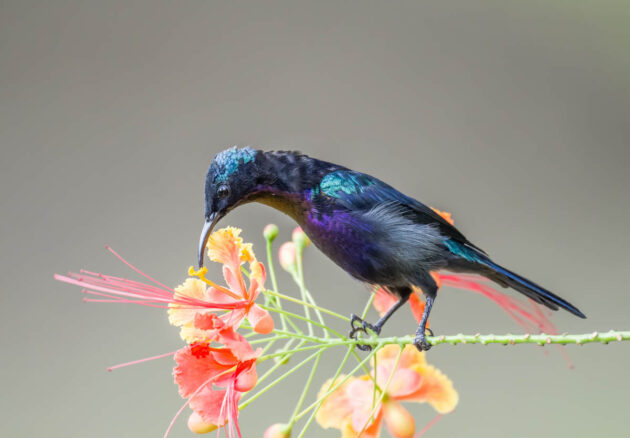
In contrast, the Plain Sunbird is basically just that – fairly plain. Rubbing it in, eBird calls it “extremely plain”.
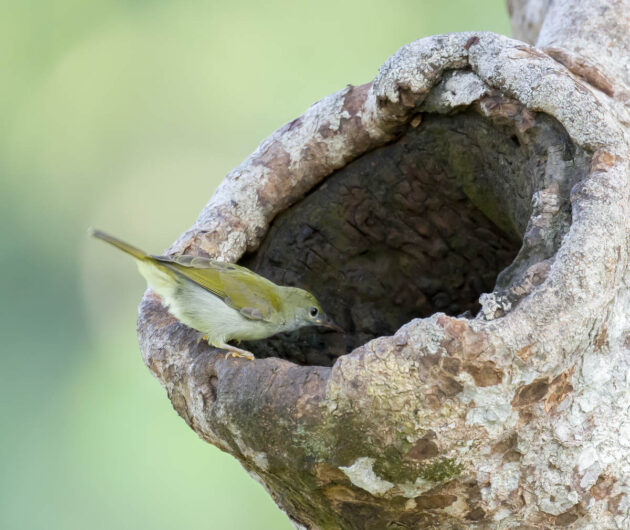
And the scientific species name simplex sounds a bit insulting, too. Tellingly, I only took one photo. Shame on me for this blatant lookism (apparently, the word lookism indeed exists, though I have to admit I had not heard it before).
When Brown-throated Sunbirds come home after a hard day of pollinating, they usually need to take a shower first.
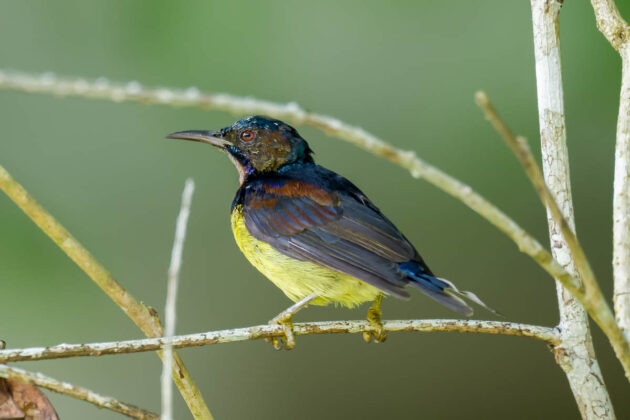
This is another bird with a large (too large?) number of subspecies – the HBW lists 15.
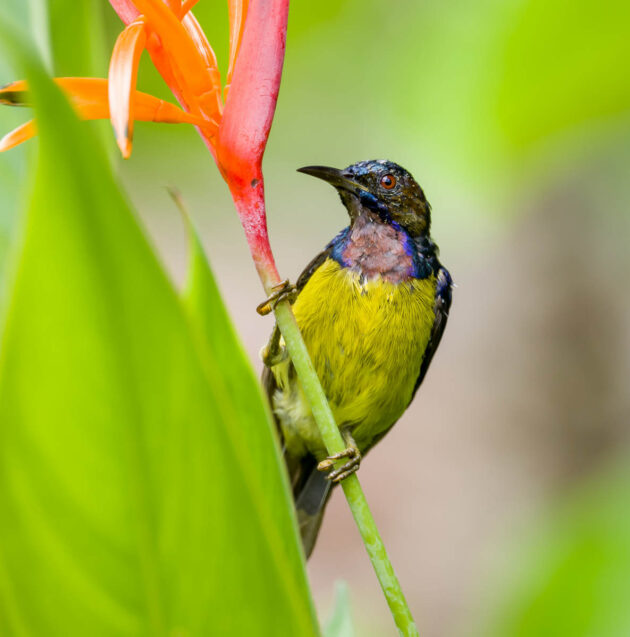
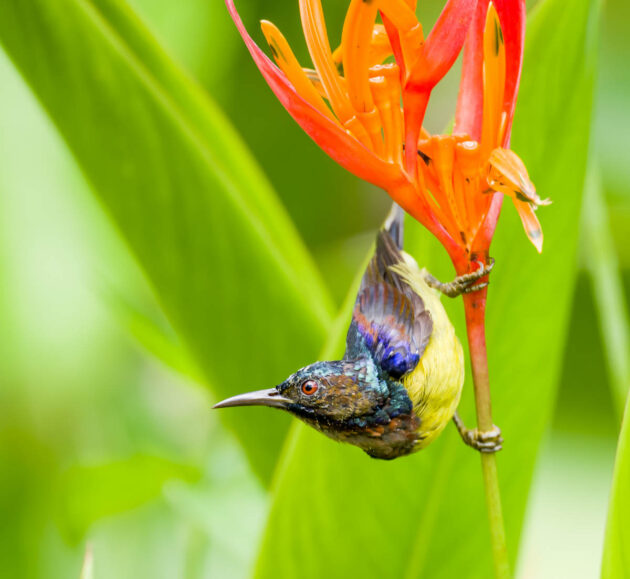
Brown-throated Sunbirds are known to have an excellent taste in music. Their current favorite song is “Deep End” from the most recent The National album.
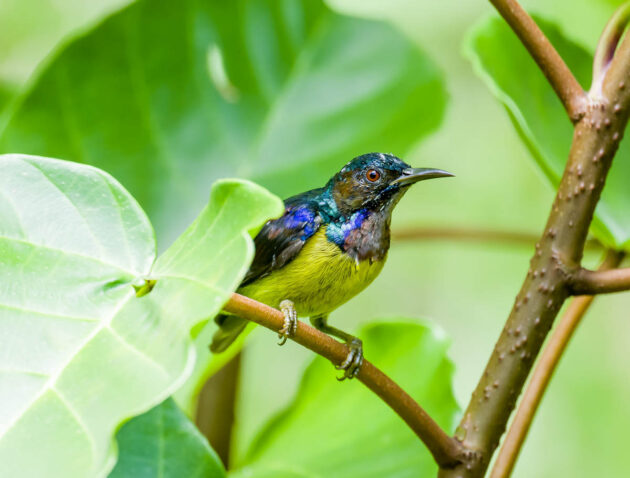
Like the other sunbirds, the Brown-throated Sunbirds are lucky to not be very suitable as caged birds – apparently, they are difficult to keep, and their singing is regarded as unpleasant (source). This is why they themselves usually prefer to listen to The National rather than to each other.
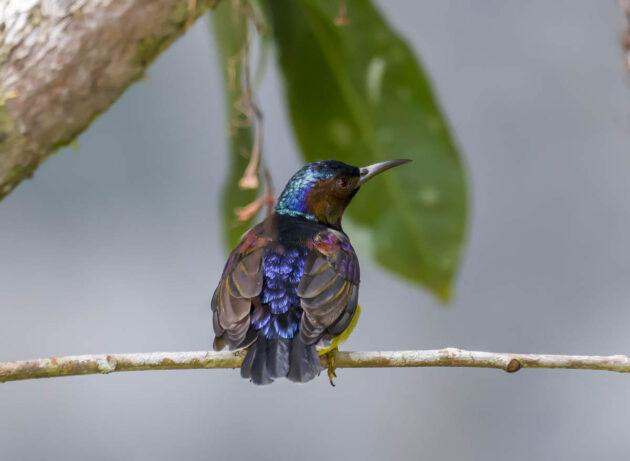
Brown-throated Sunbirds also frequently visit carnivorous pitcher plants to harvest their nectar – not a good deal for the plants as they really provide the nectar to attract, catch, and eat insects, but the sunbirds are too big for that (source).
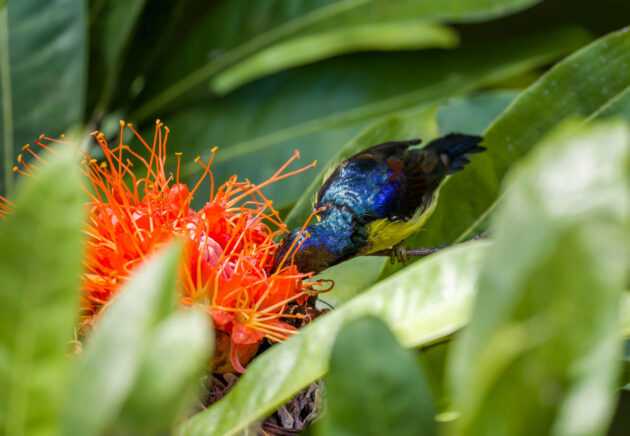
In what must read like a horror story for sunbirds, a paper describes an attack of a Racket-tailed Treepie on a nest of Brown-throated Sunbirds.
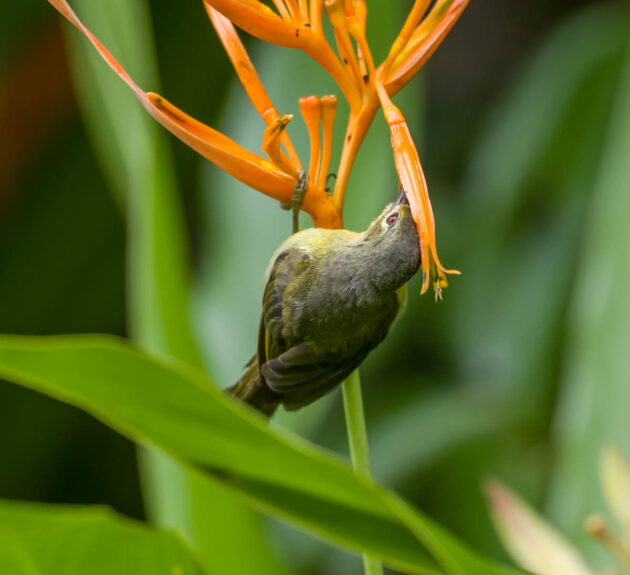
The females are better adapted to stay invisible in their nest rather than to attract the attention of bird photographers.
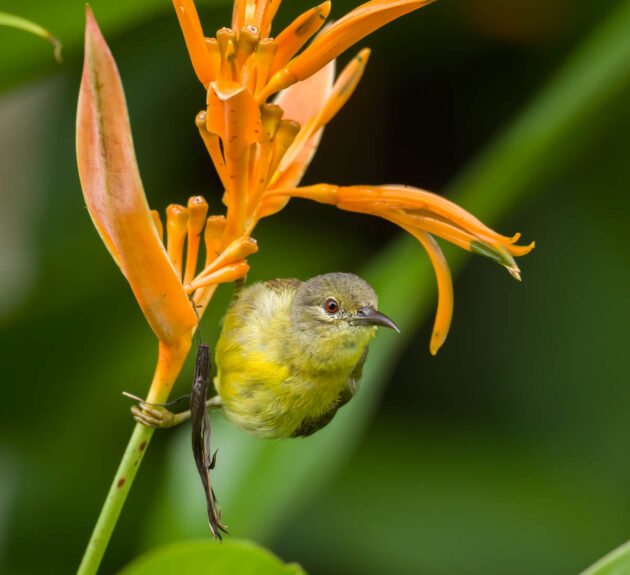
The male Purple-naped Sunbird has a metallic blue nape line – presumably the origin of the scientific name hypogrammicum (“linear line”).
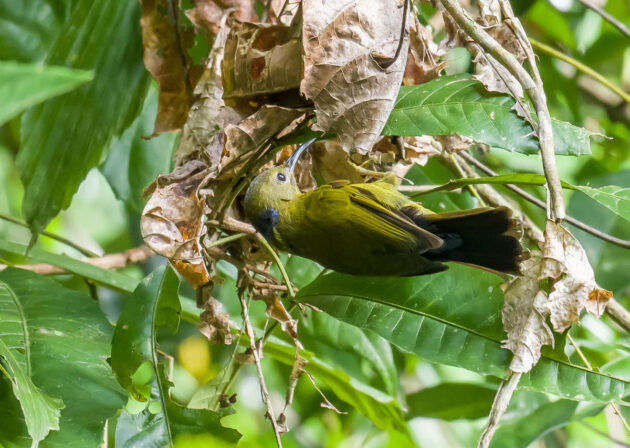
Apparently, there is some controversy about whether this species is a sunbird or rather a spiderhunter – a paper presents arguments for both but seems to lean toward the sunbird association.
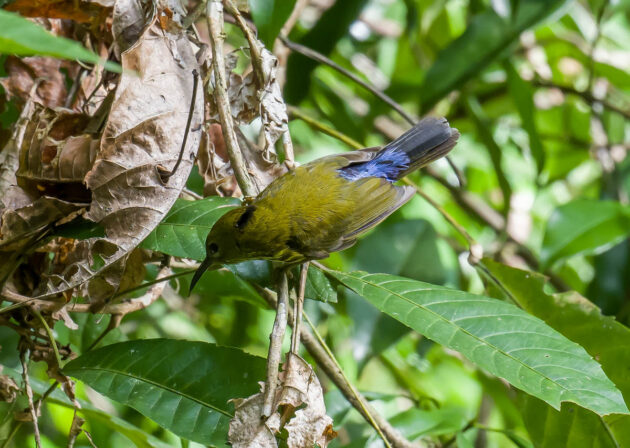
Generally, most sunbirds are classified as Least Concern, but the Red-throated Sunbird is listed as Near Threatened.
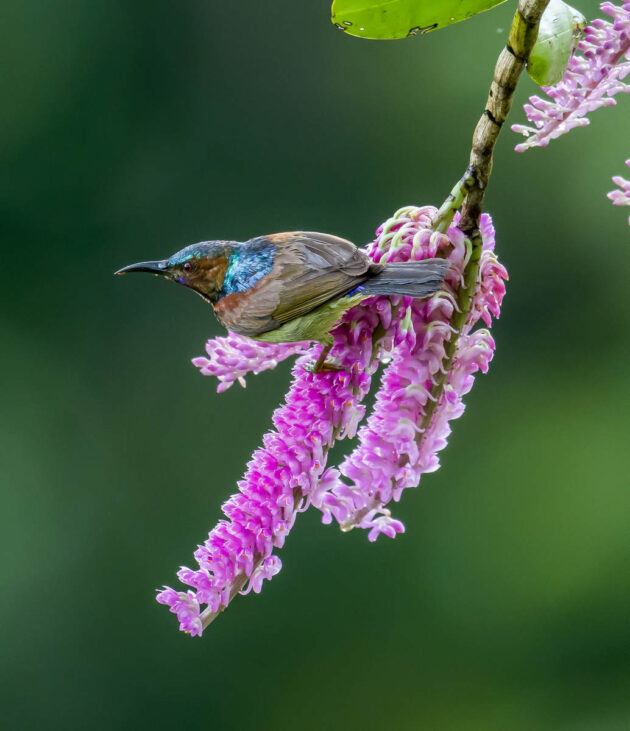
The HBW describes it as “very uncommon” in Borneo, and it can be confused with the Brown-throated Sunbird – still, the throat looks more red than brown to me …
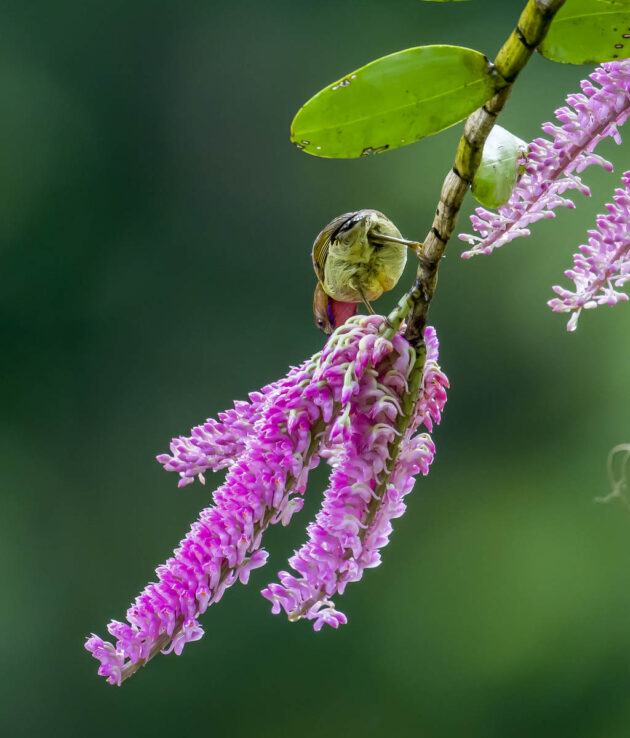
No surprise about the reason for the listing: “moderately rapid declines owing to the extensive loss of lowland forests from large areas of the Sundaic lowlands” (source).
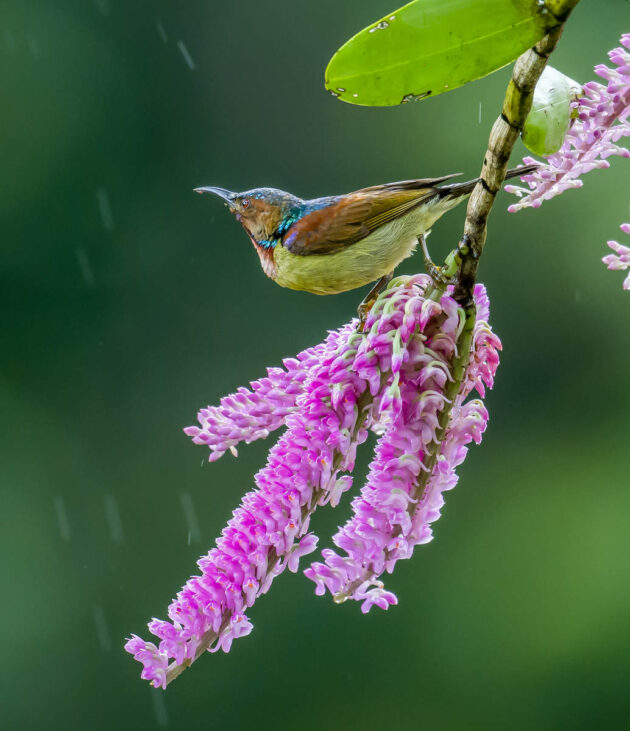
In fact, if you travel to Sabah expecting primarily jungle, you are in for a disappointment. Palm oil plantations seem to cover most of the lowlands, with only a few protected areas offering more varied and undisturbed habitats. Still, Sabah is well worth visiting for these places alone.
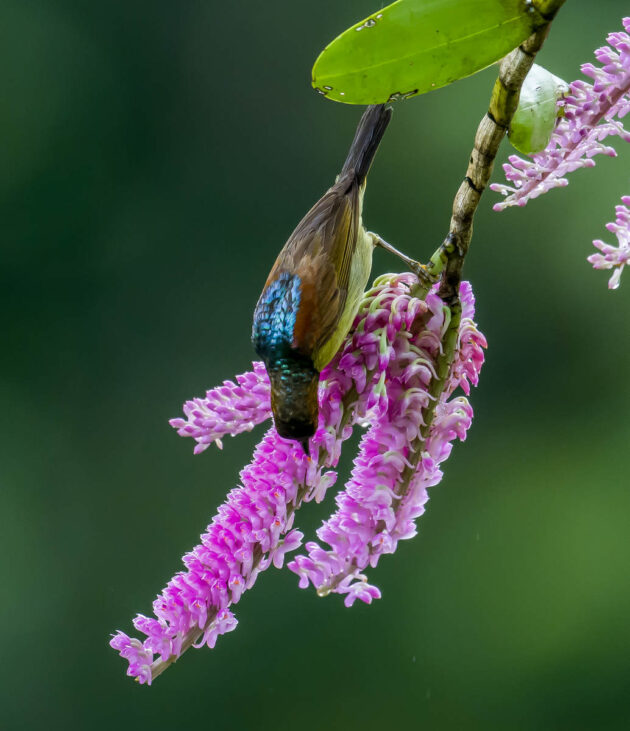
The female is often described as “less gaudy” by well-meaning birders (that is equivalent to the “beautiful soul” description used for truly ugly people).
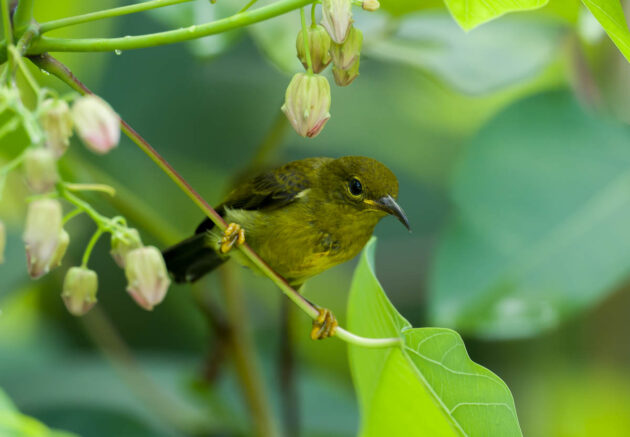
Fortunately, the Ruby-cheeked Sunbird is again classified as Least Concern.
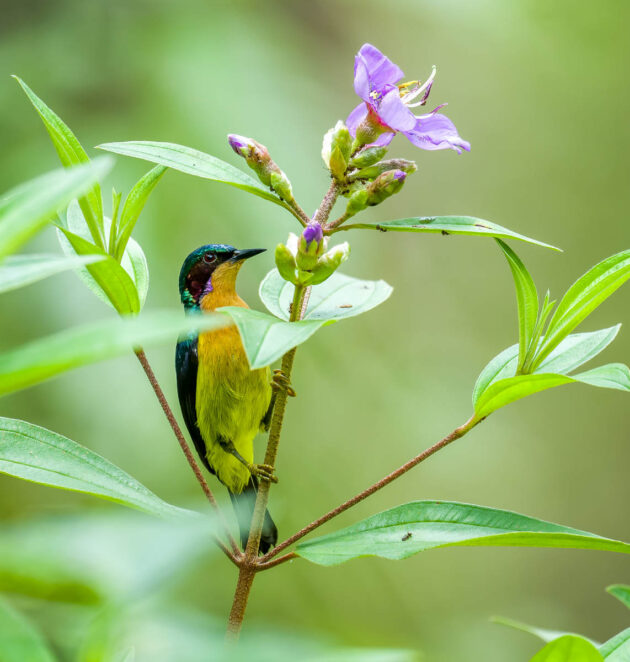
Different from many other sunbirds, they seem to prefer feeding on insects to feeding on nectar (source).
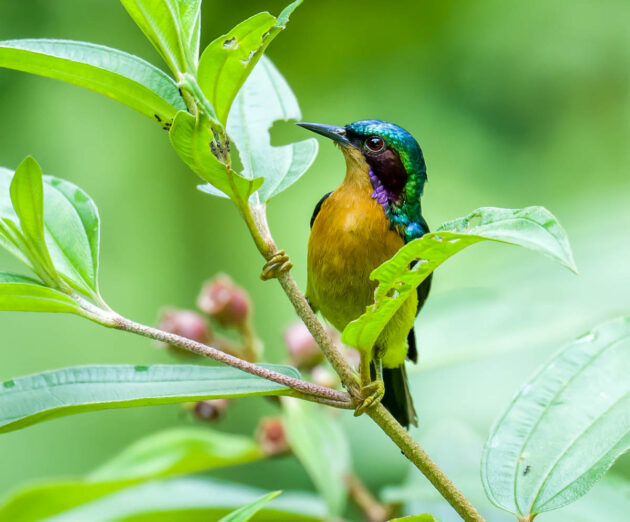
Seeds and fruit are also part of the diet (source).
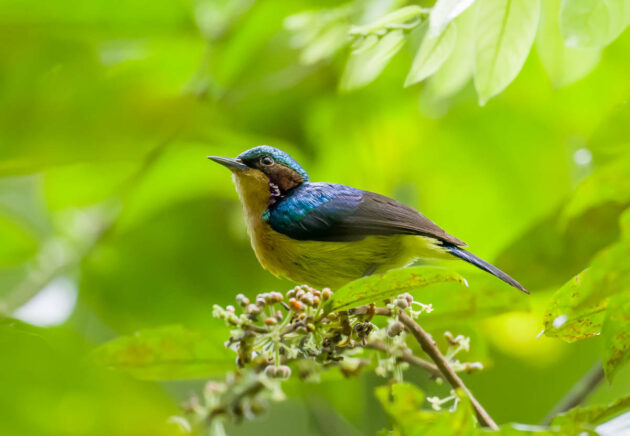
Sadly, the species is also among the many species kept as pets in Indonesia, despite the above-mentioned difficulty in keeping them alive. A depressing article in Birding Asia raises the question about the validity of field surveys when there are many more caged birds to be seen than wild ones.
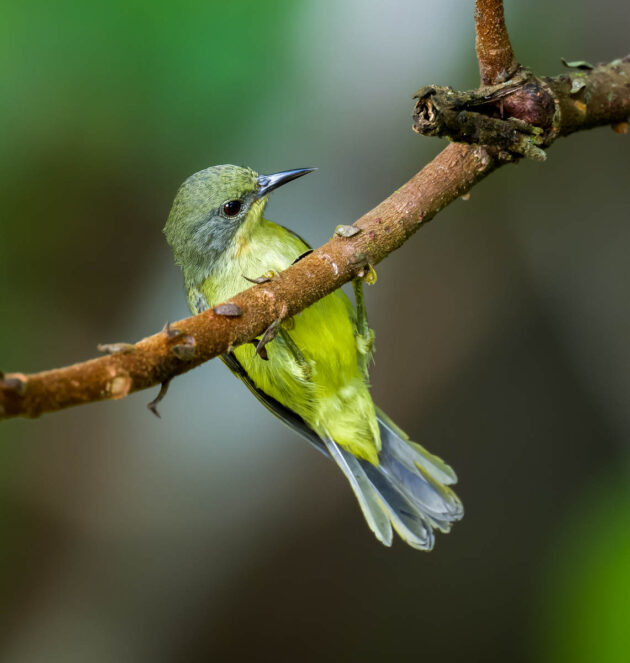
Of course, this is particularly bad as most caged birds are most likely to have been caught in the wild. Another paper with the title “In the market for extinction: birds for sale at selected outlets in Sumatra” describes this in detail. I recommend reading it if the current status of the world is not depressing enough for you yet.
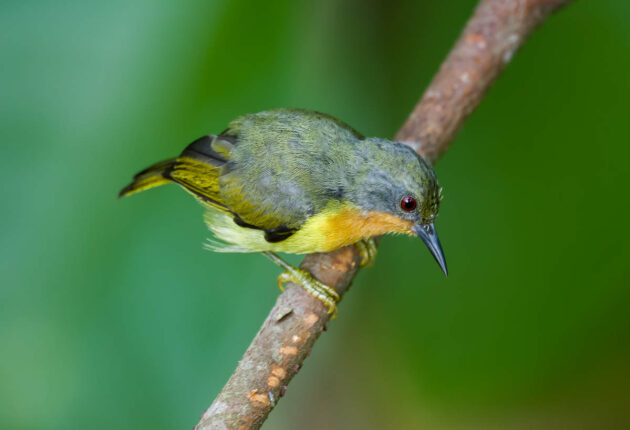
Appropriately, the favorite song of female Ruby-cheeked Sunbirds is “Sorrow” by The National.
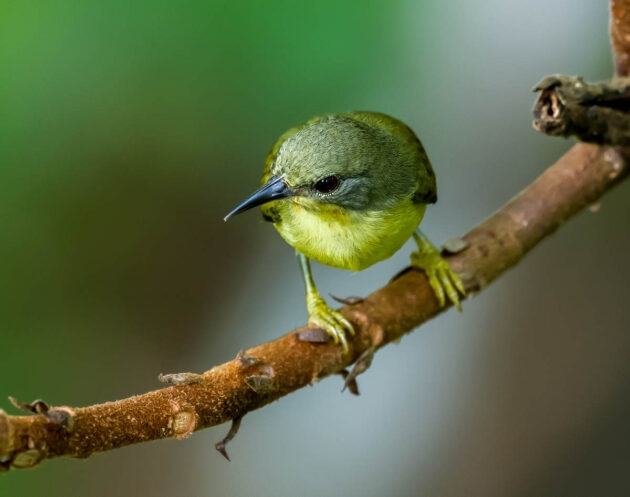













Could’ve been an interesting article is ruined by the dumb, tired, hacky anti-American intro. You ought to know that there aren’t many Trump supporters in the American birding community, but if this is what you think I guess I’m no longer a reader.
I certainly hope there are not many Trump supporters in the American birding community. It seems to me that this would be a rather self-defeating attitude as Mr. Trump does not exactly do much for the protection of the environment and thus of birds.
I always appreciate the sources Kai accompanies his articles. One can really understand further a subject. In this case the bird smuggling in Sumatra and Indonesia was really interesting to read. And you learn that it is devastating for those regions and one day those regions will be ironically silent.